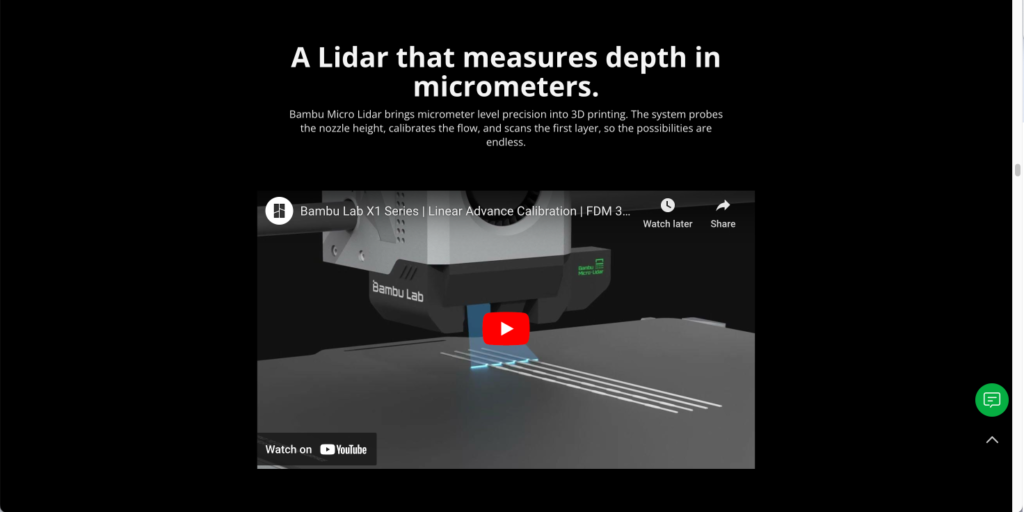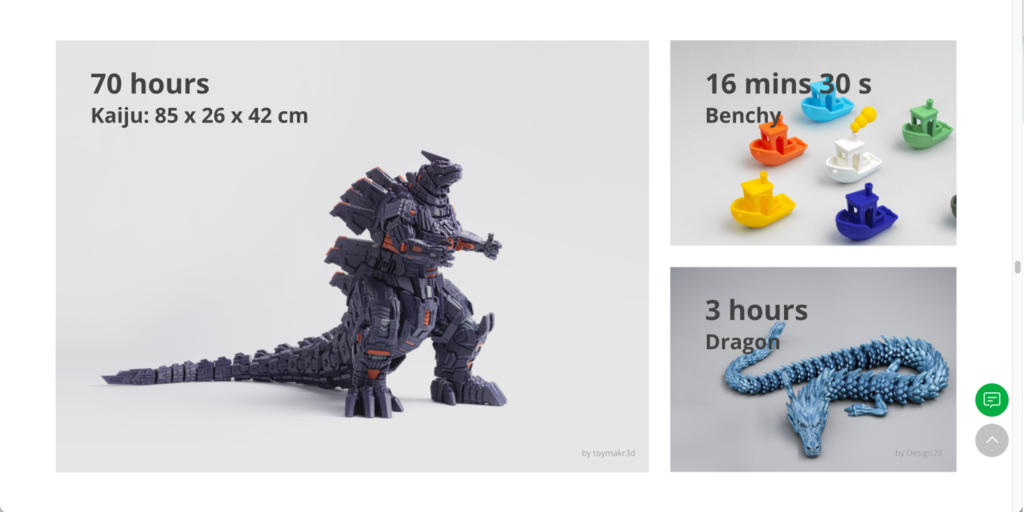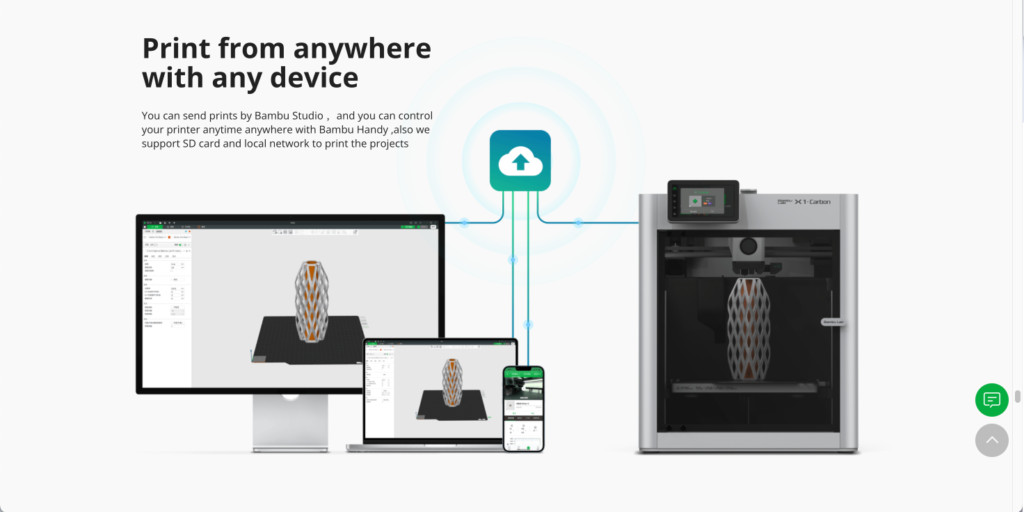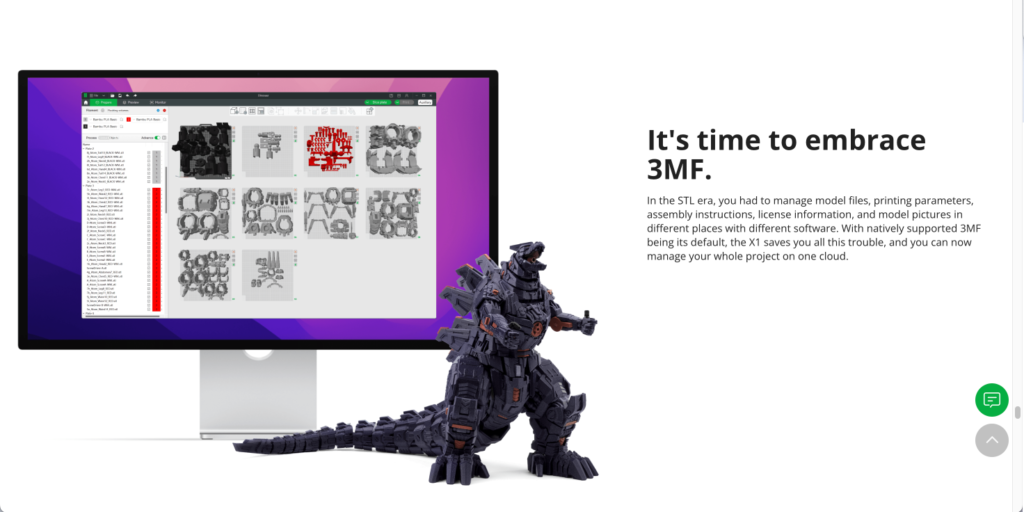I vividly remember when I first heard about Bambu Lab. In the video, the reviewer could not have been more hyped – it got me excited. I pinged a few of my coworkers and some former colleagues but none of them had heard of it. To me this seemed like a game-changer in the FFF / FDM category right out of the gate and… seemingly out of nowhere. Based on what I was seeing this thing was poised to make some major headway in a crowded yet stagnant desktop 3D printing space, and it turns out, they did not disappoint.
Telling the Complete Story
The founders of Bambu Lab hail from DJI, a company that has successfully reverse-engineered the Apple approach to marketing and product. If you look at the product page for the X1, it’s not the typical page you’d expect to see from many 3D printer manufacturers. All good product marketing messaging should utilize storytelling, and Bambu Lab adopted the long scrolling product page flow that Apple made famous, but they didn’t stop there. In fact, they literally call out sections as Epilogue, Chapters, and Prologue in telling the story – something that I’ve never quite seen before. Check it out…
Title Page: Bambu Lab X1 Series
The Title page is unbelievably simple, and frankly, I’m not wild about it. I do like the minimal text, and I get that they’re trying to grab the high intent buyers who just want to get on with it, but I would like to see just a little more punch.

Title and Prologue: We hated 3D printing as much as we loved it
The Prologue features the team’s 5 goals for the product – identifying common pains that they share with other 3D printing users. It’s very humanizing and relatable. The video is also pleasing with a nice mix of environmental and computer generated shots – though forgivably not on the production level of DJI or apple.


Chapter 1: Colors & Beyond
Color is something that has been poorly implemented with desktop 3D printers to date so it was a good feature to lead with. They also pack in mentions of a new breakaway support, some beefy hardware mentions, and materials featuring carbon fiber composite – one of the most searched materials.






Chapter 2: AI-Powered Evolution
The team at Bambu was already grouping their smart features under the AI umbrella months before ChatGPT was making headlines. From lidar to smart leveling to computer vision error detection, the software seems incredibly smart – assuming it works well.






Chapter 3: Designed for Speed
In a world where 3D printers take hours or days for most jobs, speed is going to be one variable that needs to keep improving for the industry to be successful. Bambu covers this well with up-front examples, an explanation of the tech behind the speed, and the benefits that come from being faster than other options.




Chapter 4: Redefine Smooth
Surface finish is often sketchy with filament, but Bambu has another trick up their sleeve with active vibration cancellation – no-doubt a tech borrowed from DJI drones. Showing a side by side in video form does the trick, and they drive it home with a powerful statement that they can print at max speed with top-end resolution.



Chapter 5: A Printer for Everyone
This section is a bit of a mishmash if I’m being honest. I would expect more examples of different use cases here, but they’ve picked a few seemingly random choices to highlight. That said all the features a valid in their own right.




Chapter 6: Eco-Friendly Printing in Mind
I often meet the “green” marketing angle with a heavy skepticism. On the one hand 3D printing has the potential to reduce overproduction and hone in the supply chain, but I don’t know that any one brand can take too much credit just yet. I would like to see some further explanation into how Bambu is green (ie. is the 80% Cut figure just a pipe dream of 3D printing overall?).


Epilogue: The Beginning of a New Era
Strong finish announcing a new era while also giving a human touch – “We’re proud of X1” – to make Bambu a much more relatable business than some other corporate juggernauts.

Overall Bambu Lab did a really good job of providing depth without overwhelming the customer in this layout. They pack in a ton of features and benefits but make sure that each gets its own stage to shine. The copy is creative but concise – with a heavy preference on short bold points. The separation of chapters by light and dark tones also helps it feel extremely organized.
Also, one thing they DO NOT do is mention price or value anywhere. Frankly at a price point of $1,500 they don’t need to, but I’ve definitely worked with some companies in past lives who feel the need to describe their products as affordable which has the effect of cheapening the brand. Good for them for resisting the urge to make $ value a product pillar.
While this product marketing approach was just one of several tactics in their overall marketing strategy – not to mention a killer product that seems to work as advertised (if not better than) – it’s definitely worth filing away in the inspo file.
